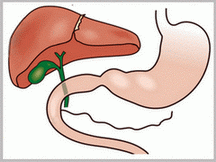
Gallbladder symptoms
Table of Contents
About me
Categories
Text
Gallstones represent a failure to maintain certain biliary solutes, primarily cholesterol. and calcium salts in a solubilized state. Gallstones are classified by their cholesterol content as either cholesterol or pigment stones. Pigment stones are further classified as either black or brown. Pure cholesterol gallstones are uncommon (10%) with most cholesterol stones containing calcium salts in their center, or nidus. In most American populations, 70% to 80% of gallstones are cholesterol, and black pigment stones account for most of the remaining 20% to 30%.
An important biliary precipitate in gallstone pathogenesis is biliary sludge which refers to a mixture of cholesterol crystals, calcium bilirubinate granules, and a mucin gel matrix. Biliary sludge has been observed clinically in prolonged fasting states or with the use of long-term total parenteral nutrition (TPN). Both of these conditions are also associated with gallstone formation. The finding of macromolecular complexes of mucin and bilirubin, similar to biliary sludge in the central core of most cholesterol gallstones, suggests that sludge may serve as the nidus for gallstone growth.
Most gallstones form in the gallbladder (cholecystolithiasis). Gallstones found in the bile ducts (choledocholithiasis) commonly originate from the gallbladder but may develop within the ducts if biliary stasis is present. Some small gallstones (less than 5 mm diameter) probably pass unnoticed into the duodenum but larger stones may impact in the duct or ampulla of Vater, causing pain, obstructive jaundice, acute pancreatitis or acute cholangitis. Stones may also impact in Hartmann's pouch, and the secondary inflammation can obstruct the normal flow of bile into the common bile duct (Mirizzi's syndrome). The development of a fistula between the gallbladder and the duodenum can allow the passage of large gallstones leading to intestinal obstruction (gallstone ileus).
Labels: Gallstones
0 Comments:
